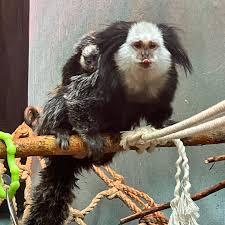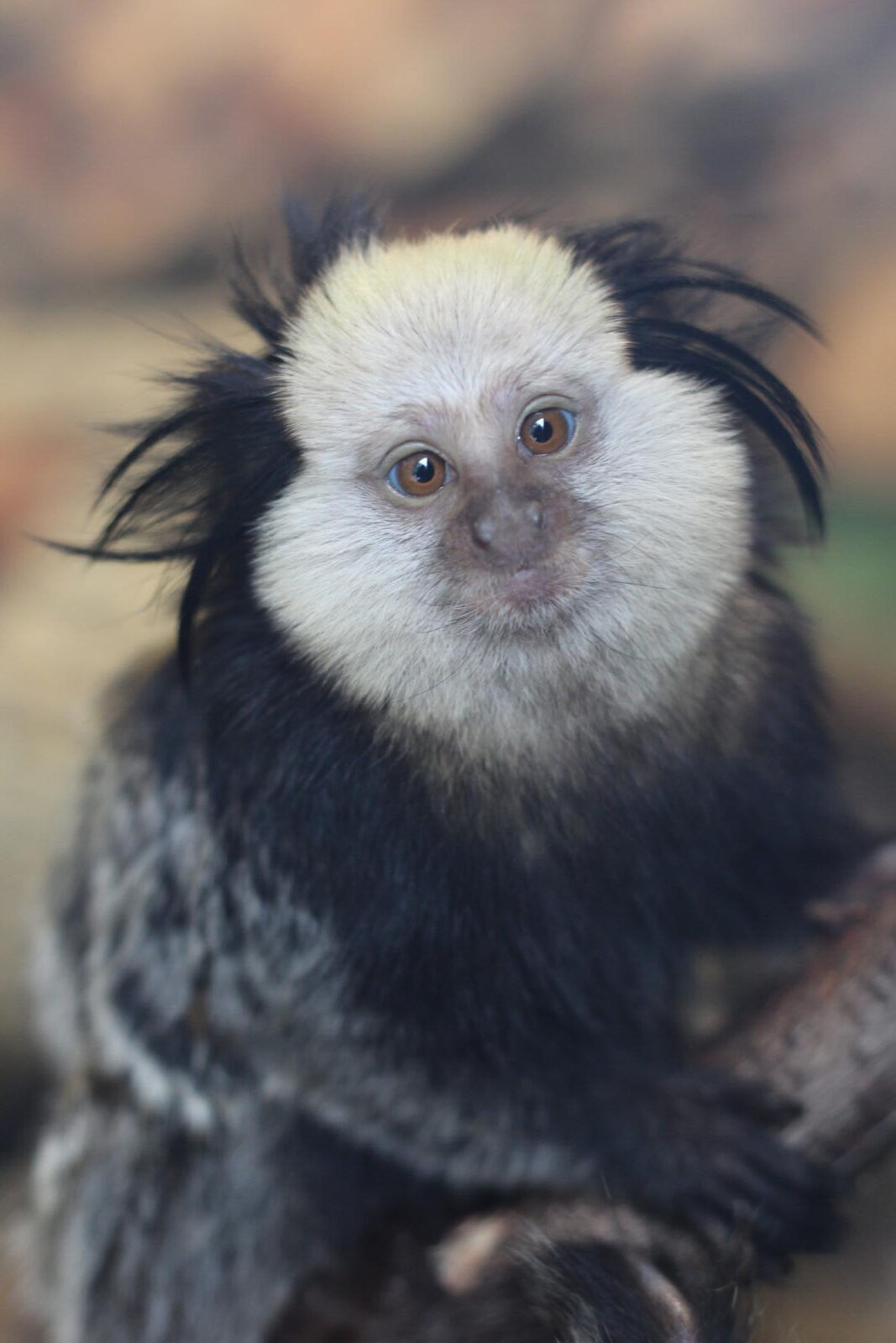Geoffroy's Marmosets
Did you know...
The offspring of Geoffroy's marmosets do not have ear tufts and white marks on their face like the adults? The offspring usually begin to develop these markings after five months of birth.

.

Marmosets (and tamarins) are distinguished from other Latin American monkeys by their small size, non-prehensile tail, and modified claws, rather than nails, on all digits except their big toe. They also possess two molar teeth on each side of the jaw rather than three. Geoffroy's marmosets are generally black and brown. Their tails are longer than their body, darker in color and slightly ringed.
Geoffroy's marmosets are social primates that live in large family groups. Each group of marmosets is typically comprised of eight to 10 monkeys, but it can reach up to 20. Females almost always have fraternal twins, and for the first week after they are born, the father is the only family member that carries the babies. After that, everyone helps care for the babies, with dad still being the main carrier. Older siblings learn how to care for their potential future babies this way. Geoffroy's marmosets are omnivores, eating fruits, flowers, nectar, and insects. They will also eat small animal prey such as snails, lizards, and frogs.

___________________________________________________________________________________________________________________________________________________
Can I feed a marmoset at the Zoo?

While our marmosets are not an animal you can get an up-close experience with, you can sign up for a cotton-top tamarin wild animal encounter and go behind the scenes for an up-close visit. Click here to learn more. ____________________________________________________________
How marmosets are being helped in the wild
Geoffroy's marmosets are listed as Least Concern by the International Union for Conservation of Nature (IUCN, 2015) due to their abundance and their presence in a number of protected areas. However, they are in a current rate of decline due to the quality of their habitat. The major threats identified are rural settlements, agriculture, livestock, and deforestation. The expansion of forestry for wood harvesting and wood/pulp plantations have led to ecosystem degradation.
The species is also occasionally hunted for the exotic pet trade.
Many areas have been designated protected areas within their natural range as National Parks and Reserves. By protecting their land, their numbers are protected along with all the other animals that live in those areas.
Other conservation efforts include studies on ecology and behavior, as well as environmental education. These actions are an important teaching tool for the conservation awareness of not only this species, but primate species in general. Developing an effective local community conservation program for this species can help preserve these marmosets and their habitat for the future.
Would a marmoset make a good pet
Geoffroy's marmosets are sold in the pet trade oversees as a "finger primate". However, don't mistake their small size for cute and cuddly. Wild animals never make good pets and take special diets and medical attention to keep one. You must also know the laws to own one. Marmosets are illegal to have in the United States and Canada. The Association of Zoos and Aquariums recognizes that personal possession of non-human primates has significant negative implications for animal welfare and health as well as public health and safety, and therefore does not support personal possession of a primate.
How you can help marmosets in the wild
- Donate or volunteer at organizations like World Wildlife Fund, which work with local communities to protect tamarin and marmoset habitat and ban the hunting and poaching of them.
- Enjoy a Cotton-top Tamarin Wild Encounter at Chattanooga Zoo. A portion of the proceeds supports organizations that identifies unprotected tamarin and marmoset habitat and work with villagers to establish new protected areas.
- Don't keep primates as pets. With the influx of humans comes potentially catastrophic diseases. Tamarins and marmosets are susceptible to measles, mumps, and other human diseases that can be fatal to these tiny primates. In captive populations, toxoplasmosis has proven deadly. Promoting or purchasing primates as pets contributes to these tiny primates demise.
- Chattanooga Zoo participates in the Association of Zoos and Aquariums' Species Survival Plan (SSP) for tamarins and marmosets. The mission of an SSP program is to cooperatively manage threatened or endangered species populations within managed-care facilities. By supporting Chattanooga Zoo, you are our partner in saving and protecting wildlife worldwide.
.
.

.
.







